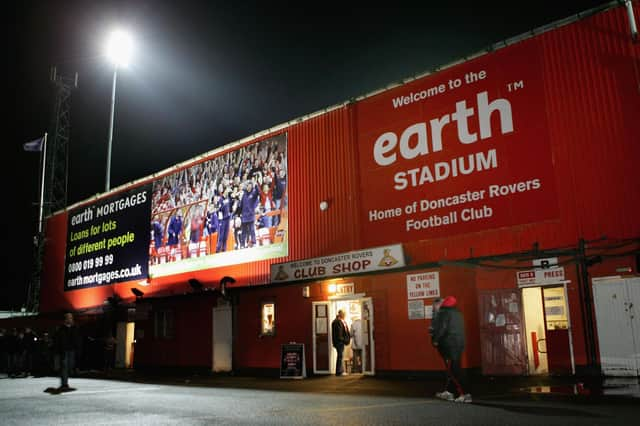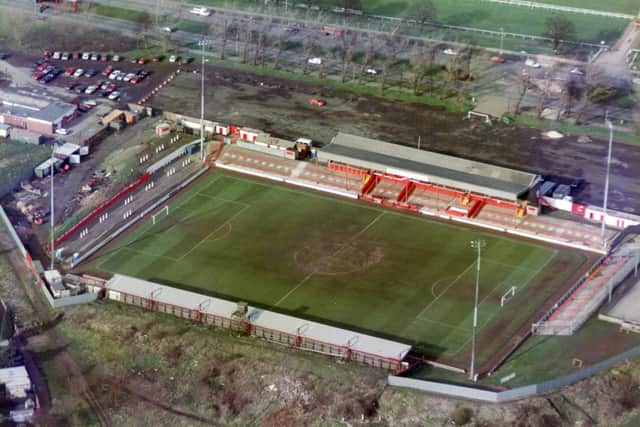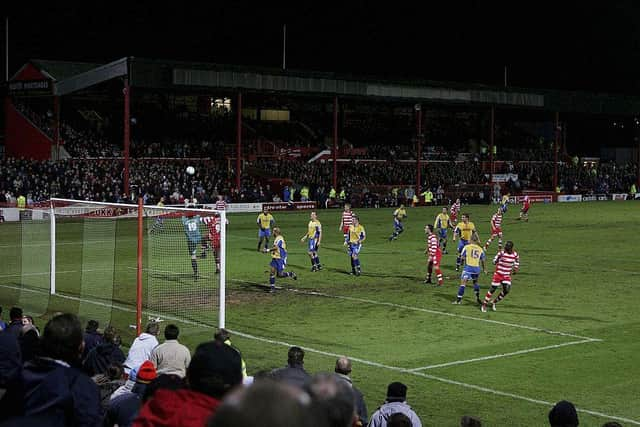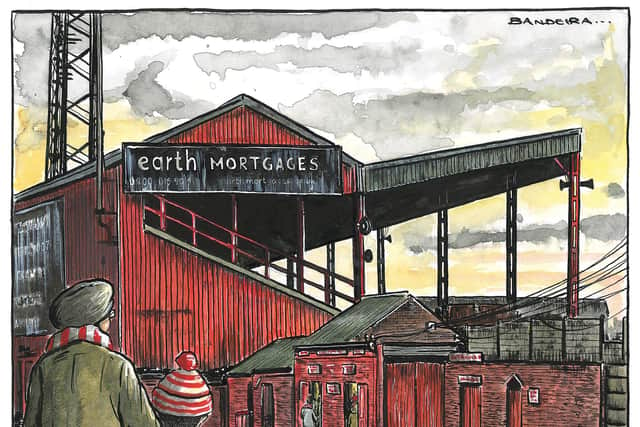Nostalgia: The story of Doncaster Rovers' much-loved former home, Belle Vue


In 1885 they obtained the use of a field at the rear of the Yorkshire Institute for the Deaf and Dumb and this ground became their home for over 30 years.
The Intake Ground, as it became known, hosted the club during their two Midland League Championship seasons in the 1890s and for three seasons in Football League Division Two in the 1900s.
Advertisement
Hide AdAdvertisement
Hide AdThe club had become inactive during World War One and the Intake Ground was requisitioned by the army. Unlike many clubs, Rovers did not re-form at the end of hostilities and there was no active senior football club in Doncaster during the 1919-20 season.


In April 1920 Doncaster Rovers FC was revived at a public meeting at the Cleveland Café. Within a matter of weeks the enthusiasts had secured a place in the Midland League for 1920-21.
They had also secured a one-year joint tenancy of the corporation’s playing fields at Bennetthorpe, a venue they had used at times in their formative years and they had begun the search for a new, permanent home for the Rovers.
Doncaster Corporation offered Rovers a longish lease on several acres of land on the Low Pasture, opposite the racecourse.
Advertisement
Hide AdAdvertisement
Hide AdThis was rather boggy, low-lying ground and for some time there were arguments between the club and the corporation over the suitability of the land.


Rovers were also keen to extend their stay at Bennetthorpe and to develop the site: the Corporation did not approve of these ideas.
Finally in May 1921 matters were resolved at a meeting between the Rovers directors and the Corporation’s Estates Committee.
Rovers would be allowed to remain at Bennetthorpe for season 1921-22 and they would submit plans to develop an area of 6-8 acres on the Low Pasture. The land would be made available to the club on a 21-year lease at an annual rental of £50.
Rovers finally had a site for a new, permanent ground.


Advertisement
Hide AdAdvertisement
Hide AdConstruction of the ground was in the hands of Arthur Thomson, a club director and partner in Thomson and Dixon, a firm of local building contractors.
Thomson and his workers were assisted by members of the Rovers supporters club, who gave up their time to help level the surface and construct banking on two sides of the ground.
The banking was created by using spoil from the local collieries. Work commenced during the summer of 1921 and continued through 1922.
As well as the banking, a spacious grandstand, with a seating capacity of 1,100, was constructed on the racecourse side.
Advertisement
Hide AdAdvertisement
Hide AdFurther seating capacity (around 700 seats) was added in July 1922 when the main stand from Bennetthorpe, constructed around a year earlier, was moved and re-sited at the Town End of the new ground.
In addition, the supporters club had started a fund to pay for a cover over the Popular Side, opposite the grandstand.
The cost of the new building work amounted to around £4,000, while the cost of re-siting the Bennetthorpe stand had been about £1,200.
Rovers fans had their first chance to see the ground at a public trial match on Saturday August 19 1922.
Advertisement
Hide AdAdvertisement
Hide AdAfter experiencing the cramped conditions at Intake and, more recently, at Bennetthorpe, supporters were struck by the size of the playing area (118 yards by 75 yards) and by the impressive grandstand.
The directors had decided to name the ground ‘Belle Vue’, even though the Bennetthorpe ground was often known as ‘Belle Vue Gardens’.
The supporters club had proposed alternative names (the ‘St Leger Ground’ being the most popular choice) and they protested that the name ‘Belle Vue’ was confusing and incorrect. However, ‘Belle Vue’ eventually became accepted.
On Saturday August 26 came the official opening. Rovers had made two unsuccessful applications to join the new Division Three (North) of the Football League while at Bennetthorpe.
Advertisement
Hide AdAdvertisement
Hide AdKeen to impress Football League officials with the fine standard of the ground, the directors had invited John McKenna, president of the Football League, to perform the opening ceremony.
McKenna was unable to attend but Charles Sutcliffe, a senior member of the league management committee, took on the duty.
The ceremony was performed at the door leading to the home dressing room.
Afterwards, Mr Sutcliffe made a speech in which he paid tribute to the work the directors and supporters had put into the building of the ground.
Advertisement
Hide AdAdvertisement
Hide AdHe was “surprised and delighted” by what he had seen and he felt sure that future generations would be proud of Belle Vue. He also hinted that an application to join the Football League in 1923-24 would be looked upon very favourably.
Rovers’ first opponents were Gainsborough Trinity, old adversaries from Rovers’ days in Division Two.
The only goal came in the seventh minute when Charlesworth headed in a cross from the left from Rintoul.
Nevertheless, it was a good, well-contested game and the crowd of around 10,000 had not only seen Rovers win, they had also witnessed history in the making.
Advertisement
Hide AdAdvertisement
Hide AdThe site of the Intake Ground is now used as part of the playing fields for Doncaster College for the Deaf. With a little imagination it is possible to visualise what was a very small, compact football ground.
The playing fields in Bennetthorpe were built over in the late 1920s and the site of the Bennetthorpe Ground is now covered by the Nuttall Cottages.
Again, a stroll down that road from the Earl of Doncaster can prove quite evocative. What do people think of when they go past the racecourse now, I wonder?